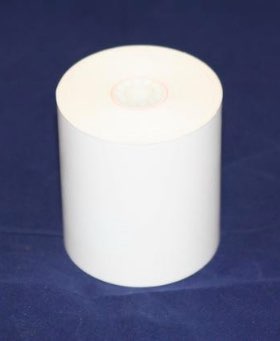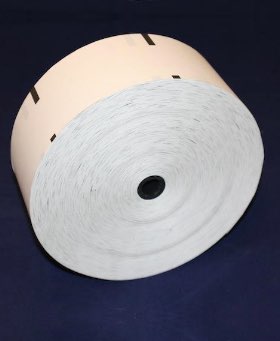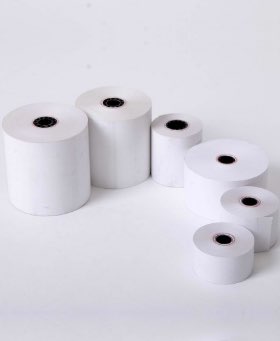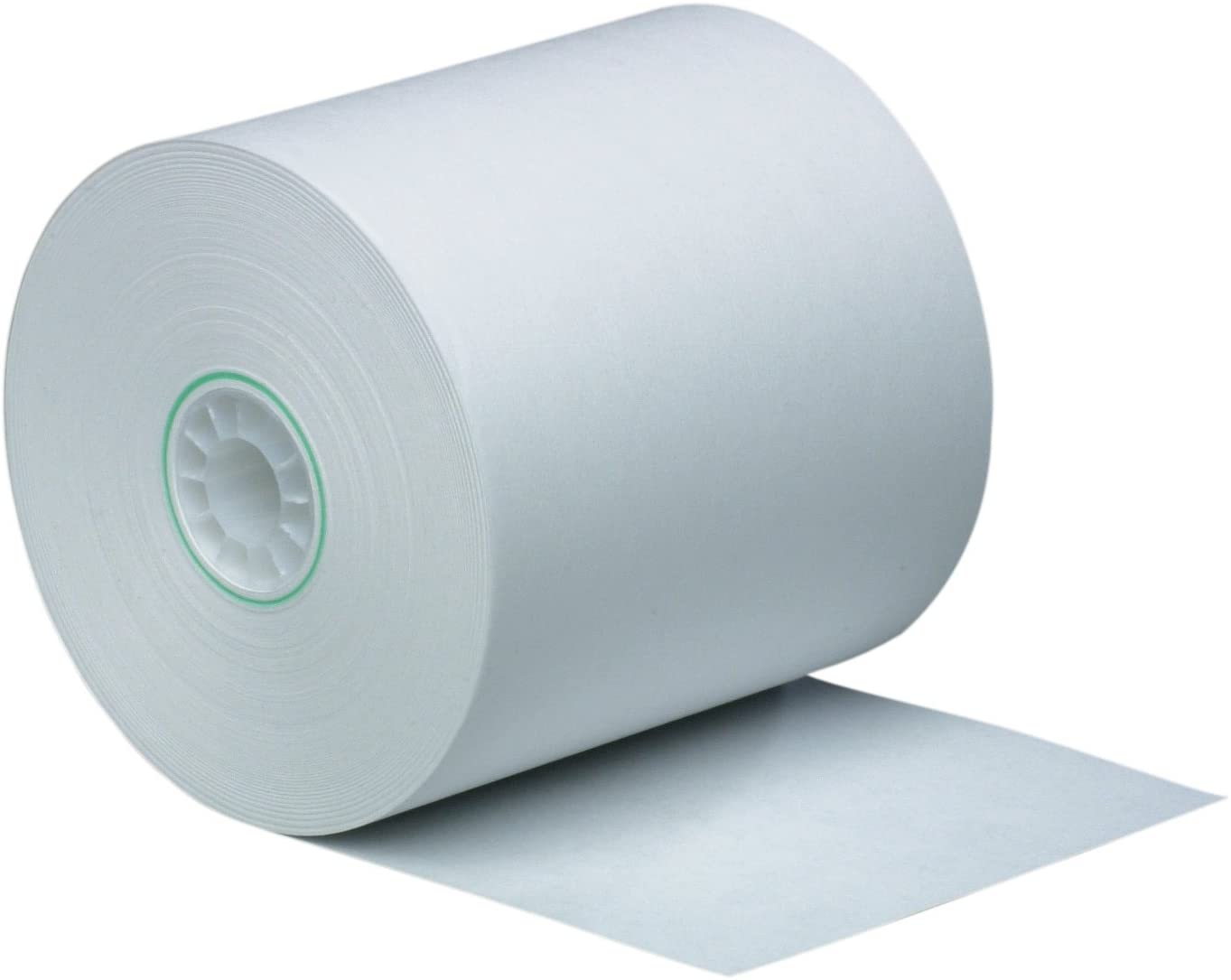Basics of Bond Paper Roll
Bond papers can be used with both inkjet and laser printers. People use it to prepare business documents, letterhead, stationery, business forms, handwritten notes, etc. Moreover, in this chapter, we will discuss the following points about this durable paper: –
- Uses of bond paper roll
- The material used to create bond paper
- Types of bond papers
- Shape and size of bond papers

Uses of Bond Paper Roll
What are the uses of bond papers?
The use of bond papers can be seen in a wide variety of everyday business requirements. Let’s check out what is bond paper primarily used for: –
- Contracts
Due to its durability, bond paper is used to create important documents such as lease agreements, purchase orders, employment, or other contracts.
- Cover Letters and Resumes
Bond papers can look more impressive than the regular copy paper. Therefore, if you want to give a better first impression to the employer, you can use a high quality bond paper to make your resumes, cover letters, or other job-related documents.
- Proposals and Reports
Bond papers are also used to create inventory, sales, or marketing reports or proposals. In addition, you can also use it to create a report cover.
- Drawings
Different types of bond paper are used for different uses. You can use the translucent bond papers to make blueprints, sketches, etc.
- Forms
Bond paper can also work well with tax forms, job applications, customer feedback surveys, or financial documents.
- Event Invitations
You can also use the decorated bond papers in making regular event invitations.
- Brochures
If you are running out of time and need to create some quick brochures for your organization, product, or service, you can use bond paper as an alternative to the cardstock.
What is Bond Paper Made Of?
Bond papers can be divided into two categories based on how the bond paper is made. These are the two types of bond paper: –
- Rag Content Pulp
Rag content pulp is prepared with the cotton fibers extracted from the offcuts and scraps of the raw cotton. In addition, they are sourced from textile mills and cotton liners. In this type of bond paper, cotton content ranges from 25% to 100%. However, wood fibers are used as filler if the raw cotton content is less than 100%.
- Chemical Woodpaste
In this category, the bond paper is majorly made from the chemical wood pulp. The wood pulp of deciduous and coniferous trees undergoes a chemical process to eliminate unwanted materials like lignin. In this process, the wood is cooked in an alkaline sodium sulfide solution.
Shape and Sizes of Bond Paper
Does bond paper come in any particular sizes?
Yes, bond paper comes in different sizes and weights. Moreover, bond papers are divided into different sizes: –
- Letter size paper
- Long Grain bond paper
- Tabloid size
What is the size of long grain bond paper?
Long grain bond papers are slightly longer than the letter size paper and measure 8.5” x 13”. Moreover, the long bond paper size in cm is 21.59 x 33.02 cm. Hence, you should not confuse the long bond paper with legal-size paper, which is 8.5” x 14”.
What is The Size of Short Bond Paper?
The short bond paper size in inches is 8.5” x 11.” Whereas the short bond paper size in cm is 21.59 cm 27.94 cm.
Types of Coating on Bond Paper
There is an end number of Bond paper suppliers and manufacturers, and all of them try to increase their sales by giving lucrative offers to attract more customers. However, the customers who do not have complete knowledge about the product often end up buying the wrong bond paper type and regret it later.
People who are planning to purchase bond paper rolls must be aware of the difference between coated and uncoated paper. Therefore, to provide you with the complete information about the coating on bond paper, we have covered the below points in this chapter: –
- Difference between coated and uncoated bond paper
- Types of coating on Bond Paper
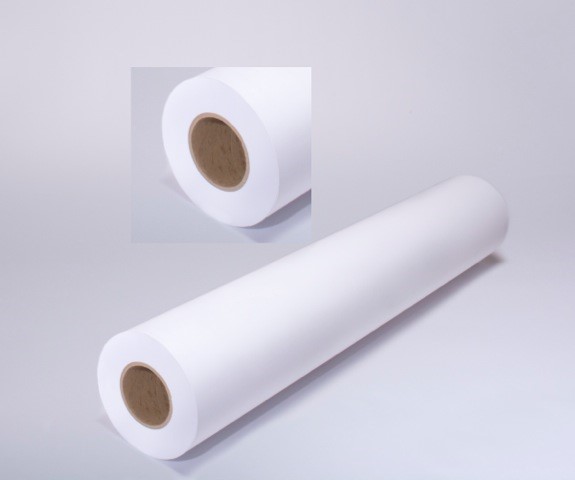
Difference Between Coated and Uncoated Bond Paper
The primary difference between the two types of bond paper is the way they are manufactured. Read the below sections to know about the coated vs. uncoated paper in detail: –
What is Coated Bond Paper?
As the name suggests, coated bond papers have a coating on them. It restricts the amount of ink absorbed by the paper and enables it to sit at its surface in a crisp and well-defined dot. Moreover, the most common types of coatings on paper are – Gloss, Matte, and Satin coating.
Advantages and Uses of Coated Bond Paper
The below pointers will help you get a clear understanding of the functionality and advantages of coated paper: –
- As compared to uncoated bond paper, the coated bond paper offers crisp and sharp results. Therefore, they are ideal for printing images with fine details.
- Coated paper comes with a glossy or matte finish that makes it suitable to create newspaper inserts, catalogs, security papers, advertising materials or magazines, etc. Primarily, it is used to print sharp and complex images.
- The coated bond paper gives outstanding ink holdout. In addition, it also works well with solid color and metallic inks and techniques such as UV coatings, varnishes, and foil stamping.
What is Uncoated Bond Paper?
Uncoated papers do not have any extra coating or paper finishing on them. Due to the absence of paper finishing, there is no glare or shine on the surface of the uncoated paper. This makes it an ideal choice to print documents that have a lot of text. The most common types of uncoated bond papers are – Laid and Linen papers.
Advantages and Uses of Uncoated Paper
Please go through the below pointers to know about the uses and advantages of the uncoated paper: –
- Due to the lack of extra coating on the surface, uncoated papers are more porous and do not soak ink into them. In addition, it also gives a warm appearance.
- They are the best suited to print documents related to education, environmental or non-profit sectors.
- Uncoated paper is best-suited with pressure-based print techniques, including embossing or debossing foil stamping and letterpress.
Types of Coating on Bond Paper
Matte Coated Paper
Matte coated paper comes with a light coating on its surface that does not make it glossy. Matte paper is dull and lusterless, due to which it does not give a vibrant finish. In addition to that, Matte paper enhances the visual designs without providing a lot of glare like glossy paper.
Please go through the below section to know about Matte paper in detail, like what is matte photo paper and the uses of Matte bond paper.
What is The Matte Paper Used for?
- Matte Papers are robust and ideal for printing photos or documents that are moved or handled frequently.
- Pen ink does not smear on matte paper that making it ideal for calendars and journals.
- The matte photo paper works for almost all kinds of photography, ranging from beautiful landscapes to family portraits. It makes your photographs look more artistic and vintage style.
What are The Advantages of Matte Paper?
- Unlike uncoated paper, the matte paper offers a smoother presentation without any shine. Therefore, it is good to enhance the visual designs or the print without any glare.
- You can touch the matte papers as soon as they are printed because they dry fast or instantly.
- It is excellent to print highly detailed photos as it clearly shows off all the picture details.
- Photos look beautiful even under the bright lights because matte paper does not show any shine or glare, which is ideal for gallery expositions.
- The image colors remain true on a matte finish. Therefore, you don’t have to worry about color distortions.
Gloss Coated Paper
Gloss coated paper is shinier and produces vibrant and glossy images. It works well for images that contain heavy color coverage, such as big graphics or photographs. There are three types of gloss coatings – soft gloss, gloss, and photo gloss coating. Read further to know about where you can use the Glossy paper printing.
Types of Glossy Paper
Check out the below sections to know about the characteristics of different types of Glossy coated Paper: –
Photo Gloss
- Offers a maximum glossy appearance.
- Primarily used for photographic printing.
- Gives the highest resolution accuracy of printed images.
Laser High Gloss
- It is ideal for laser and color laser printing.
- Gives maximum visual impact and color image accuracy.
- Employs a cast-coated process that is compatible with color laser printers.
Inkjet Premium Gloss
- Best to get maximum visual impact.
- Gives accurate color reproduction.
- 10 mil thick true photogenic glossy paper.
Gloss and Laser Gloss
- Compatible with laser and color laser printer.
- Best to get a high-quality magazine-like appearance or to create flyers.
- Laser Gloss paper is the best option to create two-sided glossy paper documents like folded brochures.
- It has a glossier appearance than soft paper.
What is gloss coated paper used for?
Below are the most common uses of Glossy paper for printing: –
Photos
It provides a maximum glossy appearance to the print. Therefore, it is ideal for the highest resolution accuracy photographs. In addition, the shiny surface of the paper reflects the light and optimizes the brightness and saturation levels of the image content.
Brochures and Publications
Laser gloss paper is ideal for creating catalogs, newsletters, brochures, flyers, advertising, and other presentation documents.
Watermarked Bond Paper Roll
Do you want to give a professional look to your business documents or images or protect their copyright? Then, watermarked paper is the best option for you. It not only provides a more professional or sophisticated look to your documents but also protects them against getting reused without your permission.
The watermarked bond paper helps you bring identity to your business stationery. Hence, along with various other advantages and uses, watermarking is also used as a branding tactic. Moreover, in this chapter, we are going to discuss the following: –
- What is watermarked bond paper?
- Uses of watermarked paper.
- Advantages and disadvantages of watermarking.
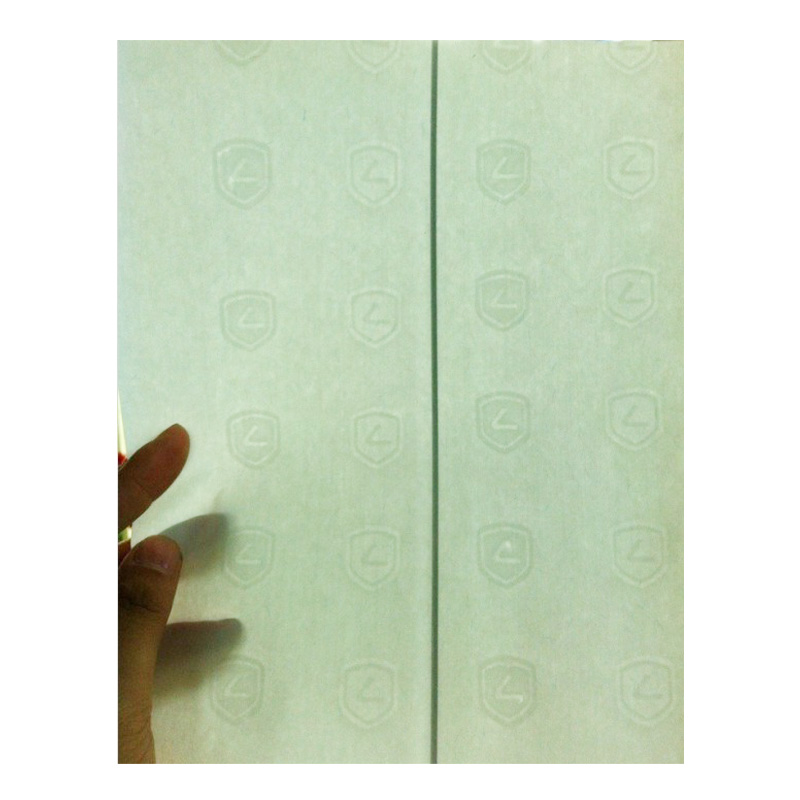
Watermarked Paper
What is watermarking?
A watermark on bond paper refers to superimposing the logo or key text of an organization on a paper or image file with the process of watermarking. The watermark is almost invisible and can only be seen in the light. Primarily, it helps in copyright protection of the document and marketing.
In the internet age, the Watermarking process is primarily digital. However, the process of watermarking dates back centuries when watermarking was only possible on paper.
Traditionally, the process of watermarking paper used to occur when the paper was still wet. Therefore it was named “watermarking.” Moreover, the watermark could be seen only when the paper was wet or held up to the light.
What is Watermarked Bond Paper?
The bond paper, which has a subtle image of the logo or text of a specific company or organization printed on it, is referred to as the watermarked bond paper. Moreover, the high-quality paper and the documents published symbolize authenticity while creating a brand’s unique identity.
You can see the watermark on the bond paper by holding it into the light. It appears as a subtle pattern on the surface of the paper. Moreover, you can get in touch with our professionals to get the best custom bond paper roll.
Pros and Cons of Watermarked Paper
Watermarked bond papers come with various advantages. However, they also have some disadvantages that you must be aware of before using watermarking. Therefore, in this section, we will discuss the significant advantages and disadvantages of watermarked paper: –
Advantages of watermarked bond paper
Security
Watermarking your company’s logo on your business images or documents provides a certain level of protection to their copyright.
- Branding or marketing
Using a watermarked bond paper for receipts, etc., also works as a branding or marketing tactic.
- Printed Watermark bond paper roll
You can use a special ink to “recreate” a custom watermark on the paper roll to convey your thoughts and motives to the recipient. For instance, you can print your company’s tagline along with the logo on watermarked paper.
Disadvantages of watermarked bond paper
- Distracts the viewer
Watermark on your bond paper often makes it difficult for the reader/viewer to see its content. In addition, the watermark also draws the viewer’s attention and distracts them from the main content.
- Content Overlap
The watermark logo or text can overlap with the main content of the watermarked bond paper, which sometimes makes it quite challenging to understand. In addition, it also covers space on the paper that could have been used to print the primary text.
Bond Roll vs. Thermal Paper Roll
The information provided in this chapter will help you understand the main differences between bond paper and thermal paper. Moreover, you should be careful while choosing your bonded paper supplier
In addition to that, you will also understand all the features of thermal paper and bond paper and how you can differentiate between the two.
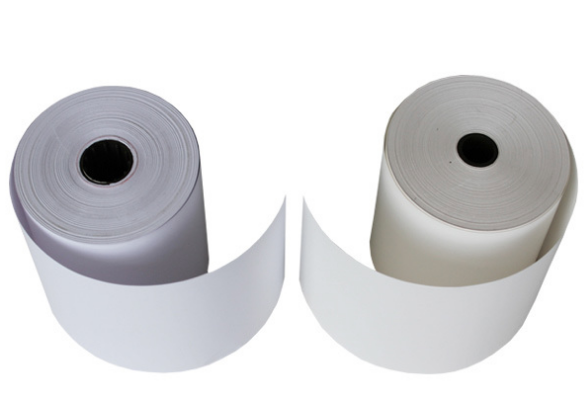
What is Thermal Paper?
In this section, we will explain the best ways through which you can identify a thermal paper: –
- Feel or observe the surface
The easiest way to identify a legit thermal paper is by observing or feeling its surface. Thermal receipt paper roll would be shinier and smoother than bond paper or carbonless paper.
However, some bond papers also have a smooth surface that can make it slightly tricky for you to differentiate between the two. Therefore, you can use the other two methods to identify a thermal paper.
- Scratch with Fingernail
The easiest way to identify if it is thermal paper or not is by scratching the surface of the paper with your fingernail. Thermal paper has a chemical coating on its surface that activates when it comes in contact with heat. Therefore, when you scratch a thermal paper with your fingernail, it generates heat, and the paper shows black marks.
On the other hand, if you do not see any black marks on the paper on scratching, it is not a thermal paper roll.
- Test on thermal printer
Another best way to identify a thermal receipt paper roll is by testing the paper with a thermal printer. This printer generates heat to produce text or images on thermal paper. Therefore, if you use carbonless or wood-free paper, the printer will not show or produce any text on it.
Qualities of Bond Paper
Bond papers are composed of about 20% to 100% cotton rag fiber. It is a high-quality paper that is widely used in various industries due to its versatility. Moreover, the material used in manufacturing bond paper rolls gives it more strength than the paper made from wood pulp.
What is Ply Bond Paper?
Ply refers to the layer of paper. Moreover, the thickness and strength of the bond paper is measured by the types of ply applied to them.
Different types of ply bond papers
Ply bond papers are mostly differentiated into two categories based on the layer of paper applied to them. There are two types of ply paper: –
- 1-Ply bond papers – these papers are composed of only one layer of paper.
- 2-Ply bond papers – they are composed of two layers of paper.
Printing Mode
Do we need an inkjet printer for thermal paper?
The surface of a thermal paper is coated with a chemical. This chemical activates when it comes in contact with heat. Therefore, it is mandatory to use a thermal printer to activate this chemical coating because thermal printers have tiny heating elements to burn and melt the dot pattern characters on the thermal paper.
On the other hand, inkjet printers use liquid ink to produce an image on the paper instead of the heat that is required to print on thermal paper. Hence, you can not use an inkjet printer to print on the thermal paper roll.
Ink Requirement for Printing
Do we need ink to print bond paper?
Unlike thermal paper, the bond paper does not have a unique chemical coating on its surface that reacts with heat and produces images without ink. In addition to that, bond papers are used with inkjet printers. Therefore, bond paper for inkjet printers requires ink to print the text or images.
Difference Between 1-Ply and 2-Ply Bond Paper Rolls
In this chapter, we will add all the information that you need about the 1-ply vs. 2 ply bond paper roll. After going through this chapter, you will get a clear idea about the differences between 1 ply vs. 2 ply paper towels and which one is better. In addition, we will also mention the useful tips that you must remember while purchasing the 1 ply or 2 ply bond paper rolls.
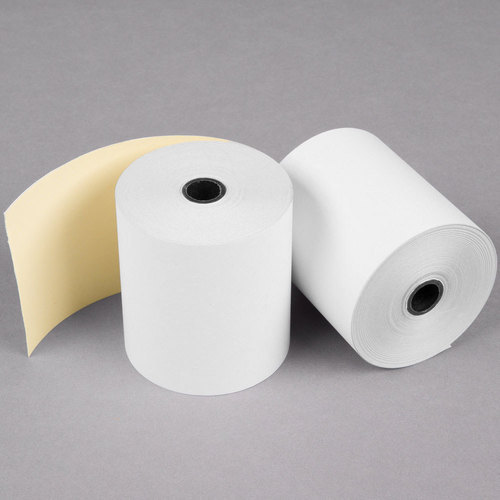
What is The Difference Between 1-ply and 2-ply Bond Paper?
Please go through the below pointers to know about the key differences between the two types of ply: –
- Ply, or the layer of paper gives you a clear idea about the sturdiness and thickness of the paper. Therefore, the 2-ply bond paper is thicker and sturdier than the 1-ply bond paper.
- The thickness level of the paper also impacts the printing results. For instance, if you write on 1-ply paper, you can see the direct transfer of the ink to the paper surface.
- The first layer or the coated back of the 2-ply paper contains the microencapsulated dye coating at the back. Therefore, you see the direct transfer of ink to the first layer of paper along with an indirect transfer of the ink to the second layer.
- When the pressure is applied on the first layer or the coated back of the 2-ply bond paper, it generates a dye. This dye enables the indirect transfer of the content to the second layer. Moreover, therefore the 2-ply bond paper rolls are also referred to as carbonless paper.
1-ply or 2-ply Bond Paper – Which is Better?
The ply type on the bond paper determines its thickness, but it doesn’t necessarily define its quality. However, you must ensure that you purchase the bond paper rolls from a reliable bond paper brand and reputed bond paper supplier to get the best quality product. You can also search for “bond paper near me”
Purchasing a 1-ply or 2-ply paper roll entirely depends on your business requirements. However, the 1-ply bond paper is used in impact or dot matrix printers. On the other hand, 2-Ply bond papers are used with POS machines, cash registers, receipt printers, etc.
Tips for Purchasing The Best Ply Bond Paper
Go through the below pointers to ensure that you choose the right bond paper for your business: –
- You must be very clear about your business requirement.
- You should also check the shape, size (long bondpaper size, etc.), and quality of the paper before purchasing it.
- Check the specifications of your printer and which bond paper size is suitable for it.
- Along with the quality, you should also keep the cost in check to get the best quality bond paper rolls at reasonable prices.
Customized 1-Ply and 2-Ply Bond Paper
You can also customize your 1-ply or 2-ply bond papers from a reputed bond paper supplier. It will make you stand out amongst the crowd and work as a marketing tactic. Moreover, you can get the customized ply bond papers at Graphic Tickets & Systems in the following categories: –
- Customize the paper with logo
You can print your company’s logo on the ply bond paper. We offer high-quality 1-ply or 2-ply bond paper that can withstand logo printing without influencing the paper quality.
- Color bond paper
You can also get the best quality colored bond papers in both 1-ply or 2-ply categories. You get multiple color bond paper options at Graphic Tickets & Systems.
- Different Sizes
We offer the best-quality and durable paper in a range of sizes. Therefore, whether you need a small or long bond paper size, you can get everything in a single place.

